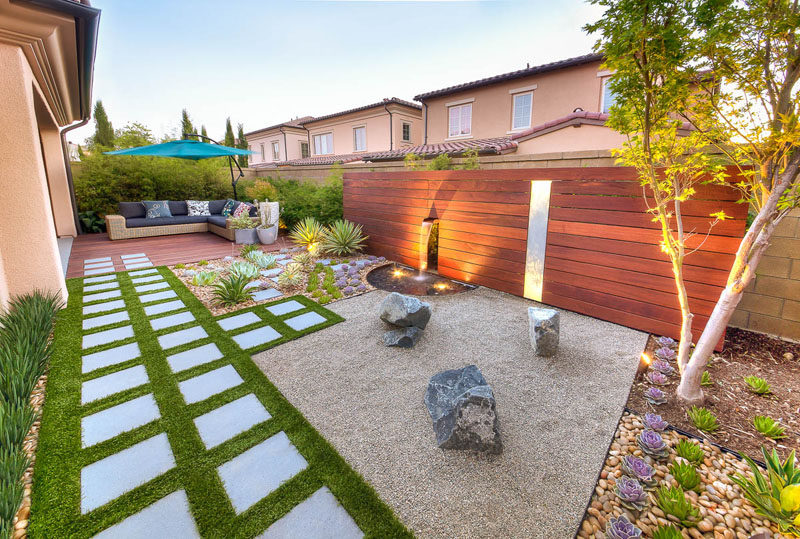
Through the ages Japanese gardeners created their own visual aesthetics and styles of designs based on the principle of the uniqueness of all elements of the composition. Water is for purification and cleansing.

A traditional Zen garden known as karesansui is a minimalist dry landscape comprised of natural elements of rock gravel sand and wood with very few plants and no water.
Zen garden elements. Ad Search Zen Garden Elements. Get Results from 6 Engines at Once. A vital element to life mizu or the water element is found as ponds streams and waterfalls.
Sometimes a small fountain designates the water element. Water is for purification and cleansing. When peering at or walking beside a pond in a Zen garden the stillness and empty space are important for reflection in a literal sense.
Miniature cedar yew and Japanese maple are some small trees that would look gorgeous in any zen garden. Furthermore many elements of the Zen garden are placed to encourage reflection about life and the universe. Features are artfully placed to.
Provides the most elegant variant represents and includes a number of functional devices such as villages with bows and bridges. Zen Garden Staircase The most important elements in the Japanese garden stone is placed you have different orientations and sizes. Up and down vertical and vertical horizontal and oblique and curved.
1192017 This concept was developed and upgraded through the years and new elements lakes bridges lighting and art installations were introduced. Today a Zen Garden is a collective term for all interpretations on the subjects that explore the inspiration of the Asian aesthetics philosophy and admiration for Nature. 5262020 They often combine the basic elements of plants water and rocks with simple clean lines to create a tranquil retreat.
You can borrow inspiration from the Japanese garden aesthetic to bring a little Zen to your landscape. A Zen garden incorporates the surroundingsnbspbeyond the immediate landscapenbspand how it influences the whole scene. Situating a Zen garden to make use of neighboring trees an interesting building or hilly view beyond a garden patio or windowampnbspThe architecture of nearby buildings particularly the one housing the Zen garden should also be considered when.
Developed by Buddhist monks in ancient Japan with some Chinese influence Zen gardens are often dubbed miniature landscapes. Because their components symbolize aspects of nature. Most notably the expanse of white gravel which is easier to work with than sand raked to have ripples represents ocean waves and the tall narrow boulders jutting out vertically represent mountains.
12172020 In fact the dai-dōrō stone lanterns so common in Zen gardens represent the five elements found in Buddhist cosmology. The part that touches the ground represents the earth. Then as you move upwards on the lantern you find pieces that represent water fire the light or flame within then air and finally spirit.
3222016 Zen gardens are designed with carefully selected elements rocks water features sand garden architecture bridges plants etc. Through the ages Japanese gardeners created their own visual aesthetics and styles of designs based on the principle of the uniqueness of all elements of the composition. The Zen garden has its own elements and you have to respect them.
Therefore before creating a Zen garden you have to be well informed. What are the elements of a Zen garden. The main element of a zen garden is sand or gravel in which wavy shapes such as water should be marked with a rake.
In addition these waveforms convey harmony. 7142013 The Japanese rock garden or dry landscape garden often called a zen garden creates a miniature stylized landscape through carefully composed arrangements of rocks water features moss pruned trees and bushes and uses gravel or sand that is raked to represent ripples in waterA zen garden is usually relatively small surrounded by a wall and is usually meant to be. A traditional Zen garden known as karesansui is a minimalist dry landscape comprised of natural elements of rock gravel sand and wood with very few plants and no water.
Man-made components include bridges statuary and stone lanterns with an enclosing wall or fence to separate the space from the outside world. 512019 Before the Zen garden existed in its mature form the Japanese dry garden with stones ornaments and objects that were reminiscent of distant landscapes and towers already existed. This combined with the Zen veneration of nature to create the mature form of the Zen garden a quiet field of medium-sized gravel raked into a fresh pattern each day with large stones.
Stones water plants bridges and ornaments are essential elements of Zen gardens. Each element has symbolic meaning. Pine trees for example represent strength and patience as enlightenment can only be gained by one who possesses these qualities.
Ad Search Zen Garden Elements. Get Results from 6 Engines at Once.